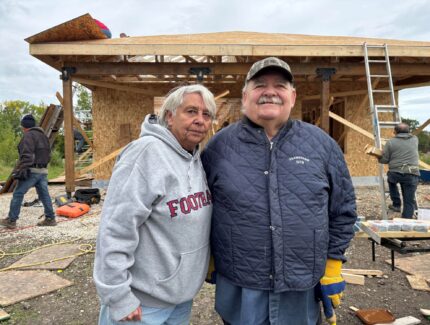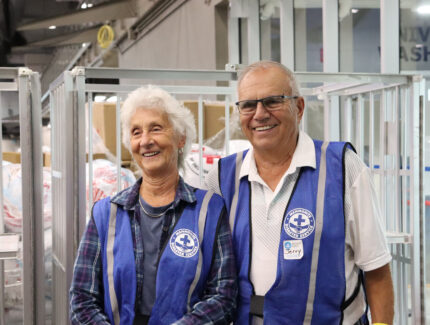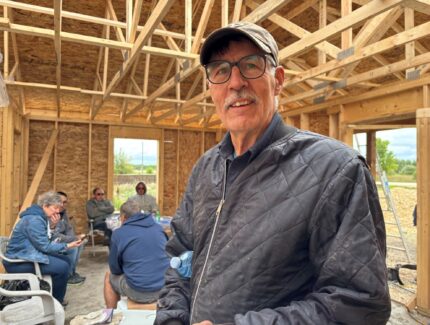

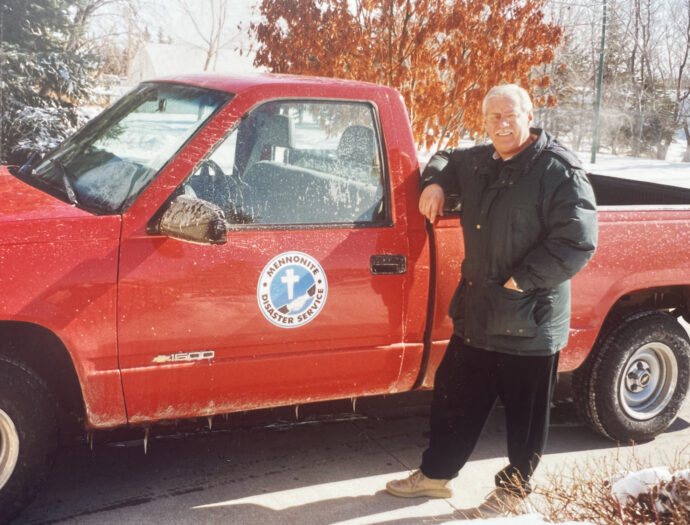
May 12, 2025
A family and organizational legacy intertwine
Father and son pivotal to MDS Canada’s development
Gord Friesen on assignment during the '97 MDS Red River Flood Response in Manitoba. Photo courtesy of Gord Friesen
“It was his orientation. He was always helping.”
Gord Friesen reflected on his father Cornelius (C.N.) Friesen’s volunteer history with Mennonite Disaster Service (MDS), a commitment that spanned more than a half-century.
C.N.’s personal story closely mirrors the larger story of MDS’ origins in Canada. Like many other young Anabaptist men, during World War II he volunteered as a conscientious objector. A few years after the war, he responded to the 1948 Red River flood, sandbagging in Rosenort, Manitoba, alongside other Mennonite volunteers.
The 1948 Red River flood response is the first documented disaster response by an organized group of Mennonites in Canada. They responded as the Mennonitische Hilfswerk, a predecessor to MDS in Canada.
“After the [1948 flood], it was generally felt… that we should do more formal organizing. I had an office in Altona then and we… used it as a headquarters at the time,” recalled C.N.
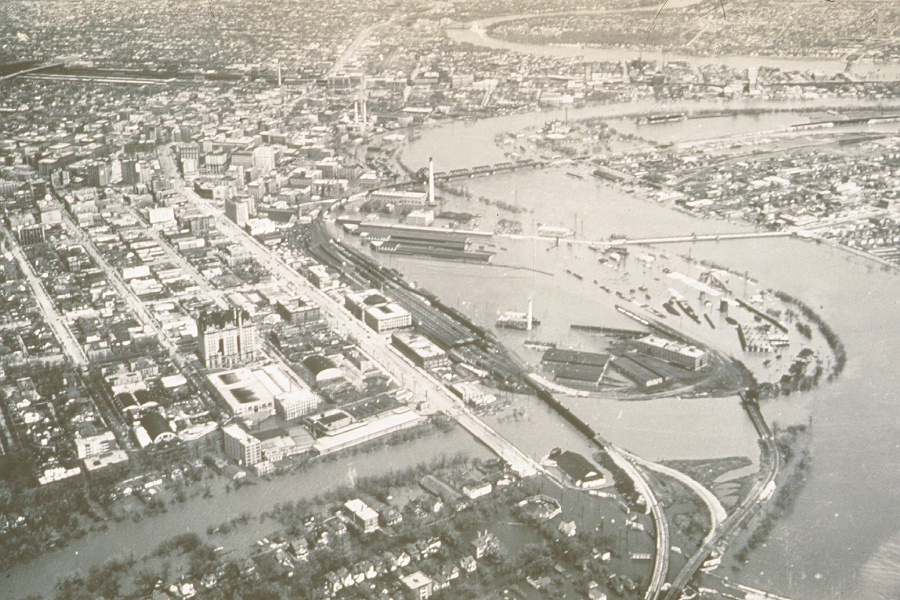
Aerial photo of Winnipeg, Manitoba, during the 1950 Red River Flood. Photo courtesy of the Archives of Manitoba
That organizational set-up was depended upon two short years later, when they responded to the historic Red River flood of 1950. During that flood, the Government of Manitoba reports that 100,000 Winnipeg residents or one third of the city was evacuated. It was the largest evacuation in Canadian history to that date. C.N. coordinated the Mennonitische Hilfswerk response, helping with the city’s evacuation by organizing temporary housing for evacuees.
Gord was born in 1947, just ahead of those flooding events. He shared his memory of the 1950 flood as a three-year-old, “I remember our family getting into a car and driving out of Altona, where I grew up, and going to the end of a road and seeing nothing but water.”
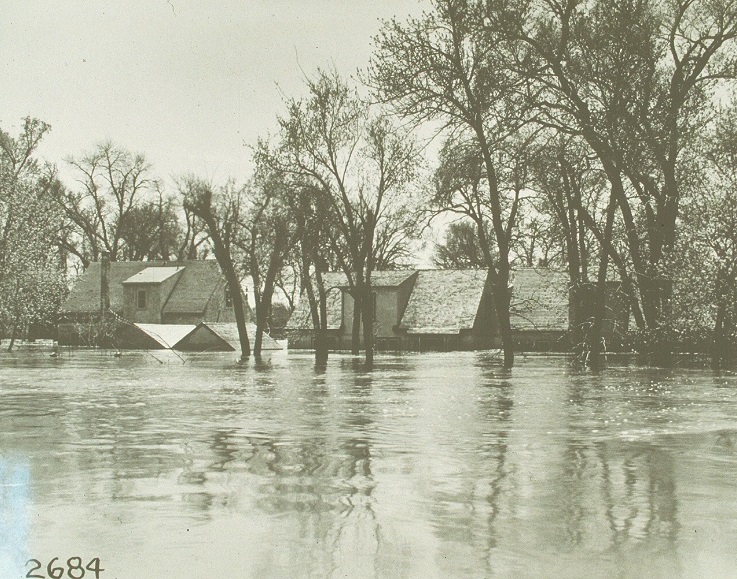
1950 Red River Flood impact in the Elm Park neighbourhood of Winnipeg, Manitoba. Photo courtesy of the Archives of Manitoba
C.N. continued to provide leadership to local disaster responses throughout Gord’s childhood — and as Mennonite organizers across the country came together to formally join the U.S.-borne MDS organization in 1956.
While his father instilled a keen interest in carpentry, Gord knew little about MDS growing up. His first MDS experience was organized by C.N. when he was 13 years old. Father and son responded to tornado damage in La Riviere, Manitoba, alongside a group of young men from their church.
“We took apart this huge barn, which I didn’t think we could do… because it was a tangled mess. But at the end of the day, I remember it was all neat piles of wood,” recalled Gord. “I was impressed with how this transformation could happen in one day… the organization and what could be accomplished, and the fun of working together with others.”
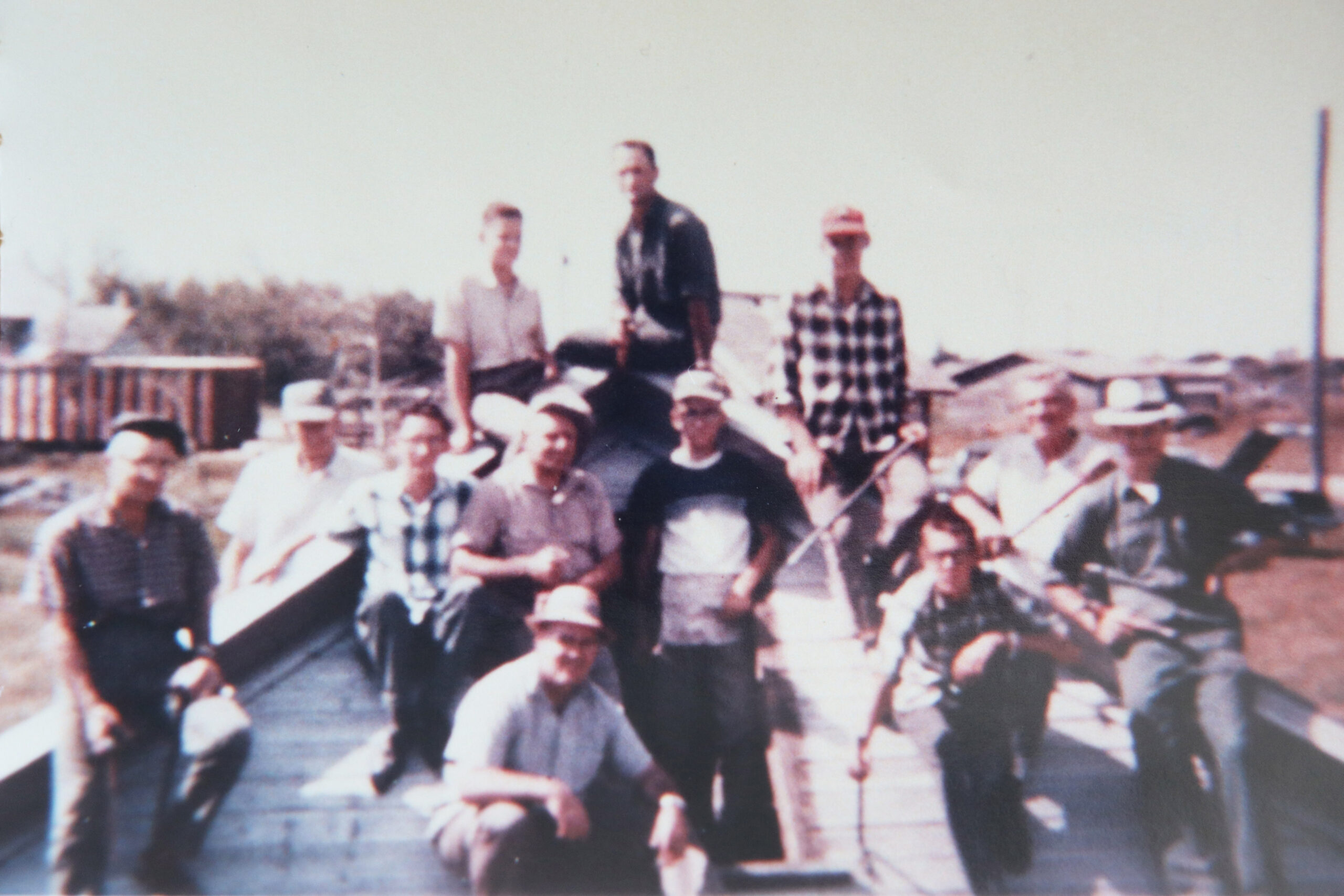
MDS volunteer crew in La Riviere, Manitoba, circa 1960. C.N. Friesen is pictured front, centre (with hat) and Gord, front second to right (with arm on knee). Photo courtesy of Gord Friesen
Gord didn’t volunteer with MDS again for the next three decades. He dedicated 25 years to a corporate career in human resources and labour relations. Then, he resigned in 1997 on his fiftieth birthday. Gord didn’t think of his resignation as an early retirement but planned to find meaningful volunteer work after a few months break. His plan was turned on its head, though, when the Red River flood of the century hit his home province.
Over the same three decades, C.N. continued to provide volunteer leadership to MDS, even as he and his wife Laura Friesen relocated to British Columbia in the late 1960s. In 1997, C.N. and Laura had planned a visit to Manitoba when an ice storm — and precipitator to the flood — halted their travels in North Dakota.
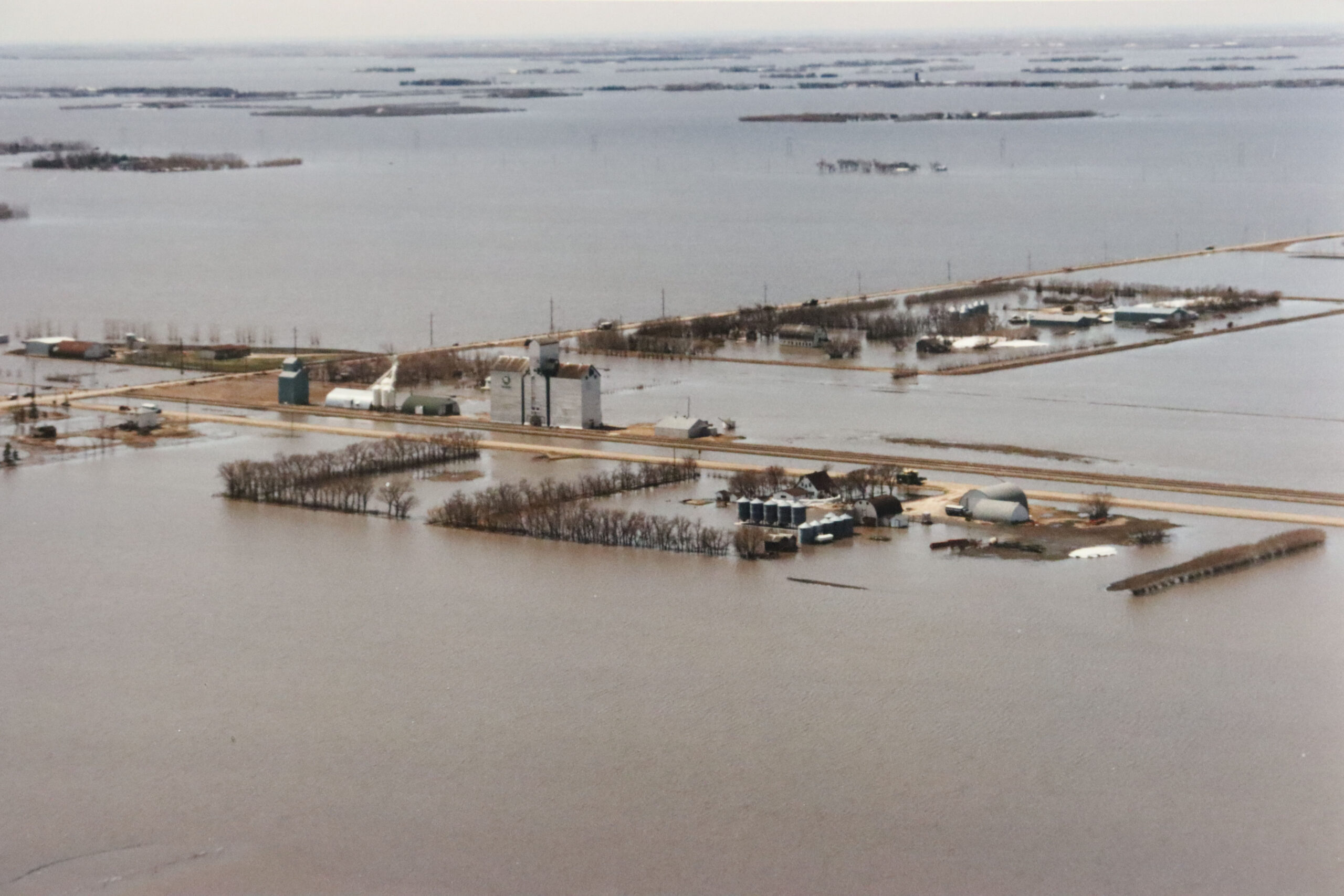
Aerial view of a southern Manitoba village during the 1997 Red River “Flood of the Century.” Photo courtesy of Archives of Manitoba
Once they reached Manitoba, C.N. met with other MDS leaders to plan a response to the flood. After the initial meeting, C.N. encouraged Gord to get involved, with his skill set and availability in mind. “You can do something here,” he said.
His dad’s influence led Gord to ride along with a volunteer doing street assessments and eventually commit to coordinating a three-year-long flood response, the largest disaster response MDS had taken on in Canada.
Over a three-year span, MDS cleaned up 802 houses and yards, rebuilt 13 houses and repaired another 99, contributed a total of 14,687 volunteer days, and received unprecedented funding from donors and the Government of Manitoba. “There was nobody else then who thought it was their mandate to respond,” explained Gord.

The Red River Flood of 1997 left a path of destruction in southern Manitoba (pictured). More than 1,800 people volunteered with MDS after the flood. MCC photo/Roland Stutzman
“It was such a tremendous job,” said C.N. “We became very well known, during that time, among the many people that we were able to serve and help.”
The response led to a stronger MDS presence within Canada, new interagency partnerships and the opening of a Winnipeg office in 2001. Gord continued to volunteer with MDS in various leadership roles, including as a mentor to the first permanent staff person in Canada, Nathan Koslowsky as the Extension Office Administrative Coordinator. Gord served as a leadership volunteer for 15 years and was a member of the binational board for his last 10.
C.N. remained an active volunteer with MDS until the year of his passing in 2010. “I personally have had the pleasure of working in the mailing office, mailing out receipts and so forth. It is time consuming. I started helping there when we moved back to Winnipeg… I have my own group of some 20 volunteers that I can call on at any time that they have a large mailing at the office, and I just call them, and we can do it,” he offered, in a 2008 interview.
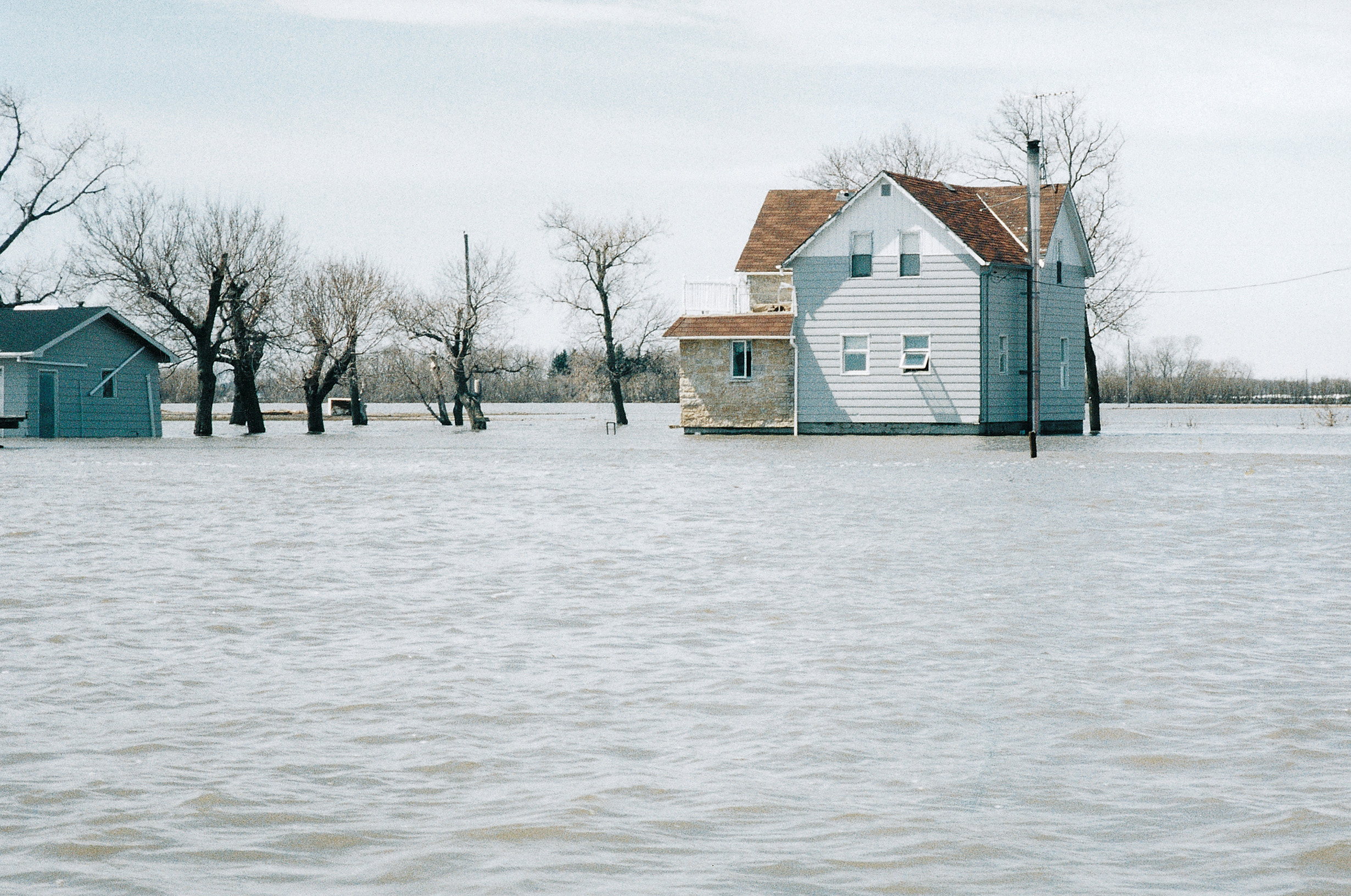
1997 Red River Flood damage to a rural home and property in southern Manitoba. Photo courtesy of Marj Heinrichs
“As long as we have disasters — and I don’t think they will stop, we’re not in control there — I think we should be better prepared and continue to prepare people and to make it exciting,” he said of MDS’ future. “There may be an opportunity for you to go eventually, even if you are not called for a long time, eventually it will come. I think we can be assured of that. We need to continue to grow and use better methods of doing it.”
At the organization’s 75th anniversary, Gord reflected on increasing disasters and MDS’ role in response, “I think the basic fundamental thing of helping with housing, rebuilding housing, is going to be more and more critical.”
“One of the reasons I stayed involved… is because MDS was open to everybody… It was very open to belief systems and also to skill levels and, so, I hope that it continues to be open to all in both areas, as long as they want to help others for the right reason, and that, regardless of skill.”
Nikki Hamm Gwala, MDS Canada Communications
With content from a 2008 interview of C.N. Friesen by Bruce Hildebrand and a 2024 interview of Gord Friesen by Gloria Nussbaum

Father and son, C.N. Friesen (right) and Gord Friesen pictured circa 1975. Photo courtesy of Gord Friesen

